Best Pellets for Brisket
Jump To Recipe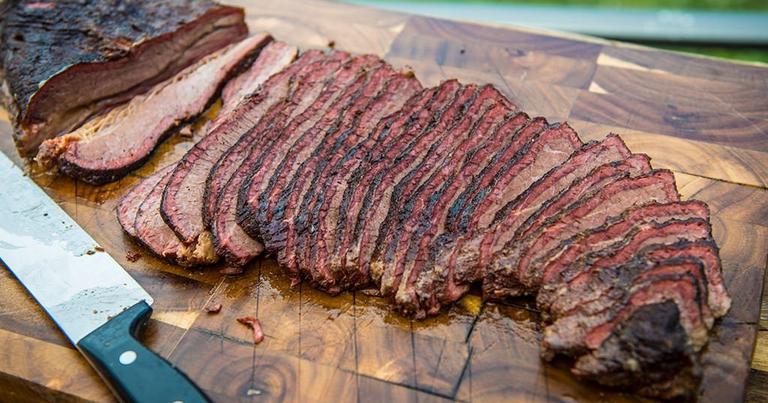
Mastering the art of smoking your first beef brisket to perfection is a rite of passage for every barbecue enthusiast. With only a handful of basic ingredients and an abundance of time and dedication, you can turn a notoriously tough beef cut into a mouthwatering masterpiece, rich with smoky and savory notes.
In your journey in making the perfect brisket, you’ll need to learn about every step of the smoking process: Trimming just the right amount of excess fat off, adjusting your smoker to the exact right temperature every step of the way; and maybe even wrapping your brisket to overcome “the stall.”
But before you fire up the smoker, there’s an all-important choice: What are the best pellets for smoking brisket? That’s what we’re here to share with you today, with notes on when and why you might choose each of our different flavors of Traeger pellets to smoke your brisket, as well as some helpful tips and reminders for how to get the best out of your next smoke.
Choosing Pellet Flavor For Your Brisket
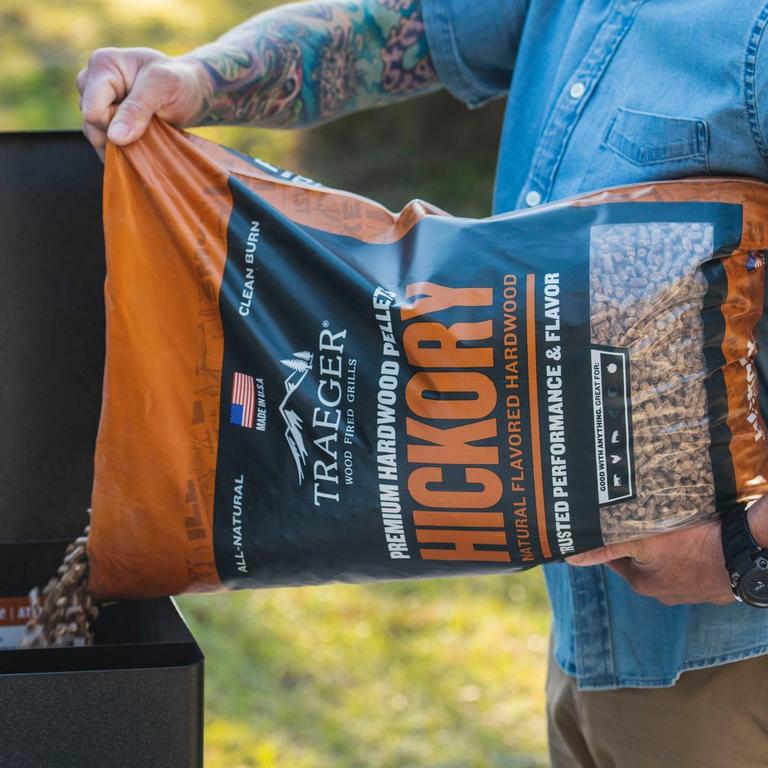
Each type of pellet you can choose will give a different final flavor to your brisket, from deeply smoky and sweet, to mild and almost unnoticeable. So which one is the best overall? We have our own opinions, backed up by hundreds of experiments with smoking brisket, but ultimately the best pellets for brisket also come down to personal taste.
With that in mind, let’s explore the many types of wood pellets to get a better handle on how each type will affect the final flavor of your smoke.
Hickory Pellets
Full-bodied and bold, our Traeger Hickory Pellets give a strong smoky flavor to brisket. If you enjoy full-flavored smoke, pure hickory is a balanced choice that always produces good results.
In his award-winning book Franklin Barbecue, renowned pitmaster Aaron Franklin has this to say: “Hickory is a bit more powerful than oak, but I like it because it burns long and clean. The taste is strong and smoky, with a hint of sweetness. I think it’s best for heavier meats like beef, but people use it all the time for chicken and pork, which can be good, too.”
We couldn’t agree more. Our hickory pellets are an excellent choice for someone looking primarily to smoke brisket but might want to try out a few other meats in their smoker at another time.
Cherry Pellets
All fruitwoods — cherry but also apple — add a subtly sweet flavor to meat, with just a mild smoke. They provide the lightest touch compared to the other pellets on this list. If you’re looking to show off the flavor of a signature dry rub you’ve been working on, that subtlety makes them a great choice.
Our Traeger Cherry Wood Pellets ensure an even heat and mild smoke with guaranteed sweet and fruity flavor. They’re not everybody’s first choice for brisket, but if you’re looking for a different accent flavor, go for these.
Mesquite Pellets
Mesquite is a very strongly flavored wood that tends to burn hot and fast when it’s in whole log form. Turned into pellets, it still imparts a big, smoky, rich flavor, but the temperature is much easier to control than if you were using whole wood.
Our Traeger Mesquite Wood Pellets use a blend of hardwoods to get that same bold flavor, but with a more even burn. They’re fantastic with brisket but versatile enough to use with chicken, fish, or steaks as well.
Tips For Smoking Brisket
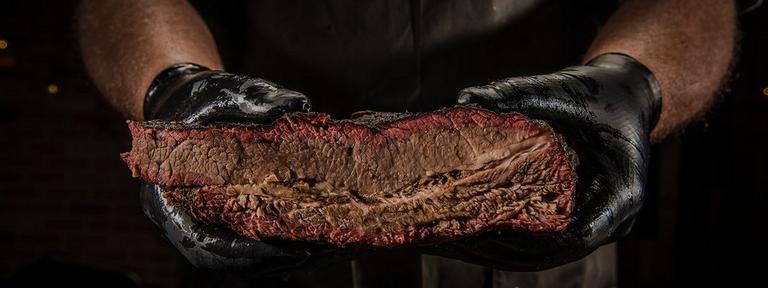
Of course, even the best pellets in the world won’t automatically guarantee that you get a perfectly smoked brisket. For that, you’ll need to ensure you have all the variables right — the time, temperature, and final rest, in particular.
With this in mind, we suggest checking out our in-depth guide, How to Smoke a Brisket, crafted by our culinary experts.
Use the Right Temperature
We strongly recommend that you smoke your brisket low and slow (between 225°F abd 275°F). That amount of heat is just the right amount to thoroughly cook a brisket in about 10 hours. But there’s an important step about halfway through the smoke where you’ll check your brisket’s internal temperature, wrap it, and return it for a final step of cooking.
Monitor Your Brisket's Internal Temperature
When it reaches 160°F, usually in about 6 hours, you can opt to remove it from the smoker to wrap it in aluminum foil or butcher paper. This step helps overcome “the stall,” when evaporation from the surface of the brisket can stall the cooking process. Put it back on the smoker, wrapped, for another three to four hours, and it will reach a final internal temperature of 200°F and 204°F degrees.
To avoid any of this stall time though, make sure to purchase one of our MEATER Thermometers. The MEATER is 100% wireless thermometer that you can connect to via an app so that you can monitor the grilling process with ease.
Use Traeger’s Super Smoke
Your Traeger’s Super Smoke mode lets you blast your food with 100% hardwood smoke. This breakthrough in grilling technology revolved around precision fan control, enabling the grill to get the maximum delivery of smoke, at temperatures from 165°F up to 225°F.
Let Your Brisket Rest
When your brisket is fully cooked and reading at an internal temperature of 200°F, it’s time to take it off the smoker. But don’t go cutting into it right away — if you don’t let the meat rest, it won’t hold onto all of its juices and smoky flavor.
Always let your brisket rest for at least an hour after it’s fully cooked, and you’ll get a picture-perfect and absolutely delicious finish.
How to Cut Brisket
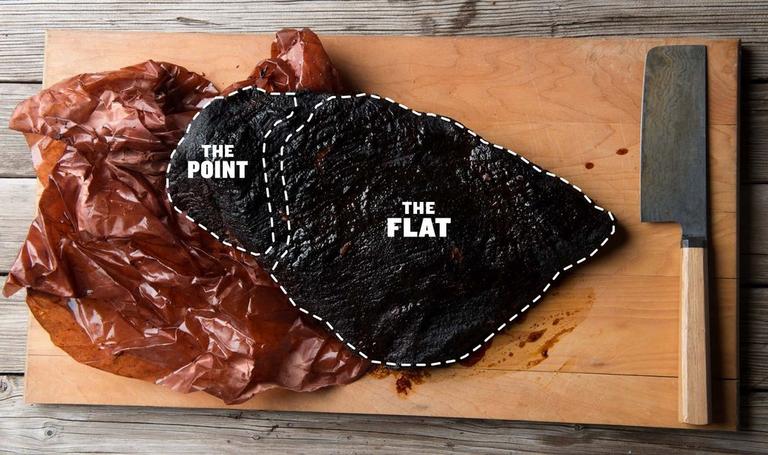
Once your brisket is rested and ready to go, you’re ready to cut and serve. If you cooked a whole brisket, separate the point and flat; this is because the grain of the meat is different in each muscle.
To perfectly cut a brisket, make sure to have a long, sharp carving knife or brisket knife, identify the grain, and then cut across it ¼ to ½ inch thick. For the point, you can opt to cube it for burnt ends.
Brisket Recipes
Whether it’s your first time smoking a brisket or your fortieth, a good brisket recipe is always worth following.
We’re particularly partial to Matt Pittman’s Texas-Style Brisket Recipe, where he and Chad Ward cover every step of the brisket making process — from trimming and seasoning to cooking, wrapping, unwrapping, slicing, and serving.
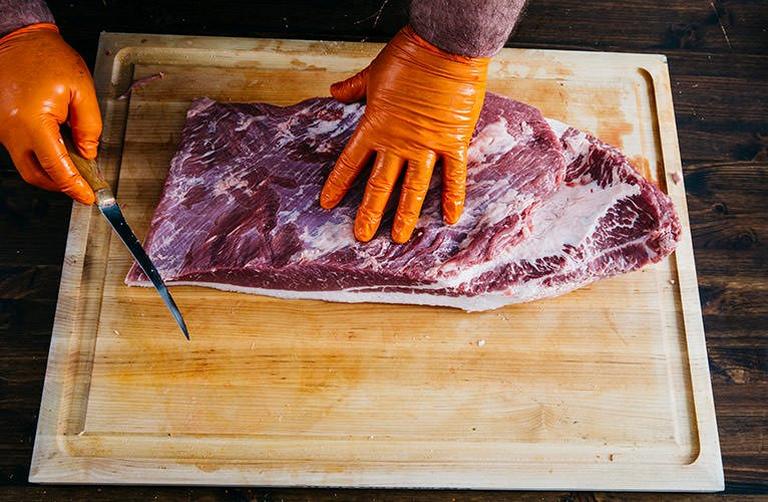
From Matt: “We start with a pretty aggressive trim, and a very simple seasoning. We’re going to give you some important tips along the way, and whether you’re a beginner or an expert, we think you’re going to learn something from this Texas-style brisket method.”
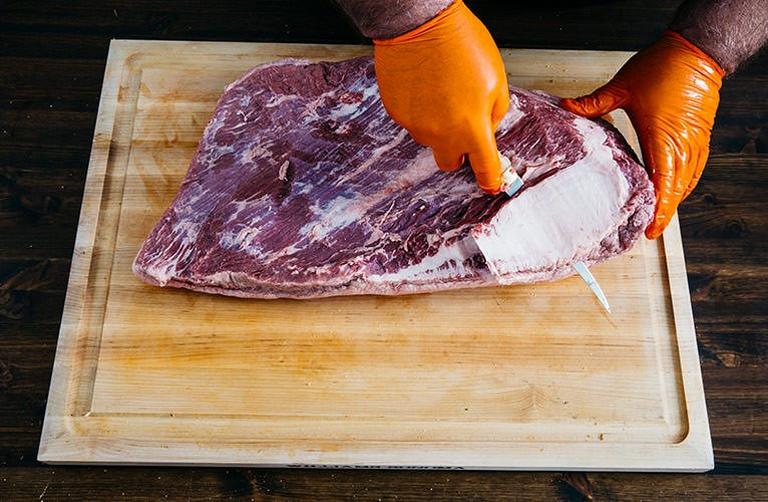
On trimming: “I’m going to remove the deckle, and I’m going to shave the fat down to about a quarter inch. I want a really clean and aerodynamic brisket. Here’s why: Barbecue is a religion in Texas, and if you’re going to cook brisket, every bit has to be perfect. I want a really nice and even piece of meat that will cook evenly.”
On seasoning: “I do use a binder. They’re optional, but in Texas it’s pretty common to use mustard as a binder on brisket. A binder keeps the seasoning adhered during the cook.”
On cooking: “A standard cook for me, with a brisket that’s about 12 pounds, shouldn’t take more than 10 hours at 250 degrees. Then you’re gonna rest it, slice it, and eat it.”
On wrapping: “I’ve learned over the years that I like wrapping in the mid-170s. But if you’re in a time crunch, you can wrap it sooner or wrap it in foil, because that will really speed up the cook.”
Give the video a full watch-through before your next brisket smoke, and you’ll be well prepared to make the best of whatever cut of meat you have.
For other brisket recipes, explore the options below:
Smoked Brisket Recipe
by Traeger Kitchen
131 Reviews
Prep Time
15 Min
Cook Time
9 Hr
Serves
8
Pellets
Apple
Embark on a flavor-packed journey with our mouthwatering smoked brisket recipe. Rubbed and slow-smoked to perfection, this signature brisket is a symphony of tenderness and bold smokiness, creating a culinary masterpiece that elevates any BBQ experience. Forget seconds, you’ll be coming back for thirds on this mouthwatering whole packer.
Ingredients
Rub
| 2 Tablespoon | garlic powder |
| 2 Tablespoon | onion powder |
| 2 Tablespoon | paprika |
| 2 Teaspoon | chile powder |
| 1/3 Cup | Jacobsen Salt or kosher salt |
| 1/3 Cup | coarse ground black pepper, divided |
main
| 1 | (12-14 lb) whole packer brisket, trimmed |
| 1 1/2 Cup | beef broth |
1
When ready to cook, set Traeger temperature to 225℉ and preheat, lid closed for 15 minutes. For optimal flavor, use Super Smoke if available.
2
For the Rub: Mix together garlic powder, onion powder, paprika, chili pepper, kosher salt and pepper in a small bowl.
3
Season the brisket on all sides with the rub.
4
Place brisket, fat side down on grill grate. Cook brisket until it reaches an internal temperature of 160℉, about 5 to 6 hours. When brisket reaches internal temperature of 160℉, remove from grill.
5
Double wrap meat in aluminum foil and add the beef broth to the foil packet. Return smoked brisket to grill and cook until it reaches an internal temperature of 204℉, about 3 hours more.
6
Once finished, remove from grill, unwrap from foil and let rest for 15 minutes. Slice against the grain and serve.